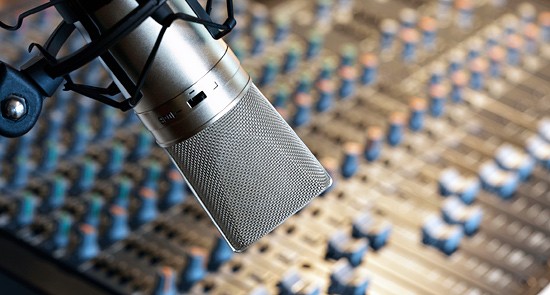
The Australian Music Radio Airplay Project is one of the community broadcasting sector’s most successful funding programs. So why is the federal government killing off its funding?
John McInnes is the secretary of tiny Warnambool community radio station 3WAY FM Great Ocean Radio in Victoria. “We’re quite a small station in the national arena, we probably have a turnover of less than $40,000 a year, there’s nobody paid, it’s wholly volunteer-operated, and that probably makes us typical of close to 70% of the community sector,” he told Crikey.
Being volunteer run, 3WAY FM relies on its volunteers to put together programming. That includes finding and selecting music, a non-trivial task in a medium awash with commercial product, but light-on for Australian content.
3WAY sources a lot of its music from a service called the Australian Music Radio Airplay Project. AMRAP maintains a sophisticated digital database of Australian contemporary music, available for airplay by community radio stations. It also does old-school mail-outs of compact discs, for broadcasters like 3WAY that haven’t quite made it to digital play-out yet.
“AMRAP has given us unprecedented access to newly created Australian music from all over Australia, it’s just brilliant,” McInnes said. “It’s just been an absolute boon to program making; the musicians win, the people that record their music win, the listeners win, everyone wins.
“It’s a really good system … and it’ll probably die at the end of the year if the government doesn’t come through with what in their terms is a trifling amount of money. Conroy’s department probably spends more on stationery.”
Federal funding for AMRAP runs out at the end of the year. According to AMRAP’s Chris Johnson, the program has fallen between the cracks of the government’s cultural funding priorities.
“We’re funded through the Department of Broadband, Communications and the Digital Economy, so the department commissioned an independent review in 2011, that returned really positive results, and we were invited to apply for a four-year renewal of our contract,” Johnson said. “In the May budget we didn’t appear. It took a while to work it out; eventually it became clear in the Senate Estimates that somewhere late in the budgetary process AMRAP was shifted from the Department of Communications to the Arts portfolio, where it wasn’t funded, it was dropped.” Since then, Crikey understands responsibility for AMRAP has been moved back to to Conroy’s department.
AMRAP wasn’t notified officially about its funding cut or the move of the program between Commonwealth departments — the news only emerged after Greens Senator Scott Ludlam took an interest in Estimates.
According to Johnson, AMRAP was able to “patch together some reserves” from the Community Broadcasting Foundation. “As the Minister knows, those reserves run out in December. The government keeps saying to us they are still looking for solutions, but nothing has been found yet,” he said.
Johnson says there’s no logic to the move between departments — community broadcasting has always been funded by the Department of Communications. “We’re a community radio initiative, this is core infrastructure for the community radio sector,” he said.
“… there needs to be a recognition of the contribution that music has not just culturally but economically. What are the other opportunities around that?”
While commercial radio broadcasters continue to lobby for exemptions from Australian content quotas, community radio actually broadcasts more Australian music than the mandatory 25% quota. “Community radio now averages 37% Australian music content, that’s well above what the commercials do,” Johnson told Crikey.
“It’s so ironic that while the commercial radio sector seeks to lobby for exemptions on Australian music — for example they’ve successfully received a three-year exemption on Australian content [quotas] for digital radio — community radio is the opposite end: they’re passionately supportive, they want to play Australian music, but they can’t access it without AMRAP.
“The issue is access: it’s really hard for unsigned Australian musicians to distribute their music to literally hundreds of community broadcasters who decide what to air. The fact is, AMRAP is the sole source for the vast majority of community radio stations to access any music, let alone new Australian music.”
The value of AMRAP is not in dispute. Independent music publicist Emma Wiking says it’s “integral” to her business of promoting independent artists. “I worked for independent labels for many years, and I work as a independent publicist now, and we work with lots of independent Australian artists. Just in the last 12 months we’ve distributed over 30 Australian artists through AMRAP. We’ve had over 900 airplay orders across 100 different stations, mainly regionally actually,” she explained.
According to Wiking, “with the artists that we deal with, you can’t afford to service every station, it just costs an absolute fortune. For independent artists, airplay at a community station is the first part of building your base.”
Dean Ormston, policy spokesperson for the Australasian Performing Right Association, told Crikey he finds the situation puzzling: “We’re a bit perplexed, because it’s not a lot of money.
“AMRAP delivers a really valuable service for not a lot of money at the end of the day. It would be a great shame to see it come to an end. The other point we would make, we’ve made this point to a number of portfolios in government, really what we need as an industry is greater cross-portfolio representation.”
Ormston points to the stalled progress of the government’s 2007 election promise of a Strategic Contemporary Music Industry Plan, which has ground to a halt at the draft stage. “We spent a long time talking about what might be in a Strategic Contemporary Music Policy, without very much happening,” he argued.
But Ormston welcomes this year’s budget funding for contemporary music, particularly the Sounds Australia export initiative. “That’s great, full marks, there’s something happening there,” he said.
“What we could continue to argue is we want a whole-of-government consideration around music … while this has been great to get a level of funding from the arts portfolio, there needs to be a recognition of the contribution that music has not just culturally but economically. What are the other opportunities around that?”
Veteran music policy advocate John Wardle, fresh from a big win on liquor licensing reform for small venues in South Australia, reckons federal contemporary music policy is “drifting”.
“On the one hand we’ve got [Arts Minister Simon] Crean’s office who are clearly pushing arts policy, even though the rest of the cabinet doesn’t seem to support them, and on the other hand you’ve got Conroy’s office that are at cross-purposes with a contemporary music policy,” Wardle told Crikey. “The music industry is well aware that Crean is doing great things … [but] without people like the Communications portfolio being onside, it’s a struggle.”
Crean’s referred questions to Conroy, who didn’t reply to Crikey‘s repeated requests for comment on the status of AMRAP.








Local music needs to be supported for a number of reasons. The main reason being if it’s not supported it will die –
“whenever I hear the word ‘culture’ that’s when I reach for my revolver”…Goering was always good for a ‘laugh’.
http://www.themiragemall.com/music/ purchase all the latest albums conveniently online
And without AMRAP artists like Gotye would never have broken into the international market by breaking into the national market. It’s totally illogical, just like lots of decisions by this government.